
My cultural education takes unusual turns when least expected. And, it was least expected when I took a Viking River Cruise to Portugal, a country I knew little about. What I did know, dealt with three diverse areas: religious shrines, great explorers, and fortified wines.
I knew least about the Portuguese religious shrines, and even though I am not religious myself, I signed up for a day long journey, to two famous religious places: the Batalha Monastery/Cathedral and the Fàtima Shrine. On this journey, I was on a Viking transport full of devout people, who were excited to see these two places, as they all knew what I had yet to learn: the symbiosis of history and mystery in each setting.
The first area we visited was the Batalha Cathedral and Monastery, Batalha meaning battle. Such an ironic name for a cathedral! I had to admit my ignorance to my fellow travelers, as I knew nothing about this edifice, its history, or who was buried there. At first glance, it was gigantic, and, unlike many cathedrals, it was distant from any city -- the only sounds were those of nature: the rustling of pink Oleander bushes and green Ash trees.
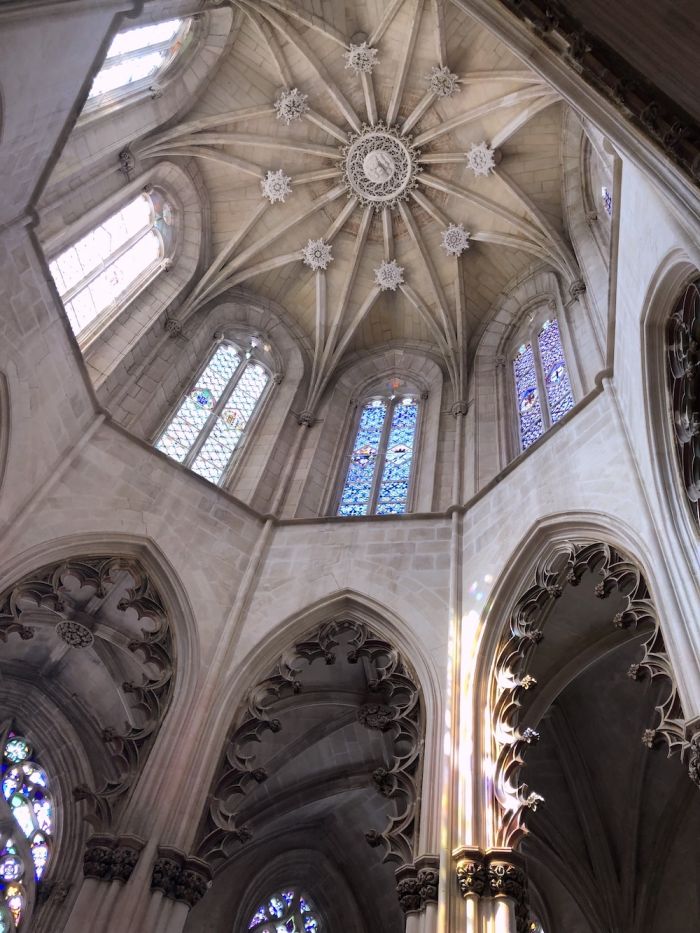
I learned the cathedral and monastery were built to thank the Virgin Mary for the Portuguese victory over the Castilians in the battle of Aljubarrota in 1385, fulfilling a victory promise of King John I of Portugal. It took well over a century to build, starting in 1386 and ending in 1517, spanning the reign of seven kings and the services of fifteen architects. It was a somber place, the exterior filled with turrets and gargoyles, and the interior filled of candles and crypts.

But for me, there were two cathedral dimensions that transcended religion, culture, and war. The first was the dual tombs of King John of Portugal who died in 1433, and his wife, Philippa of Lancaster who died in 1415, after having given birth to nine children. Their statues lie together in full marble regalia, but with one detail I had never seen before. They were holding hands. This detail in this formal, silent Gothic cathedral, seemed so earthly, yet so eternal.
And, the second: wandering through this cathedral, I noticed something else. Suddenly, there were patterns of colored light on the ancient pilasters, columns, and floor. It was noon, and the sunlight came through the high stained glass windows, creating dazzling, ephemeral tints to the 13th century colorless granite. It was a spiritual shock when such vibrant color happens in such unexpected places. As the sun moved, or as the clouds shifted, the colors faded, leaving the Batalha Cathedral interior as it was, a somber sentinel to Portuguese history.

It was mid-afternoon when we came to the Fàtima Shrine. Though Batalha was indeed full of Portuguese antiquity, it was the Fàtima shrine that most travelers on our pilgrimage wanted to experience. It is said this shrine is the second most visited religious site for all Catholics in the western world, the first being Lourdes.
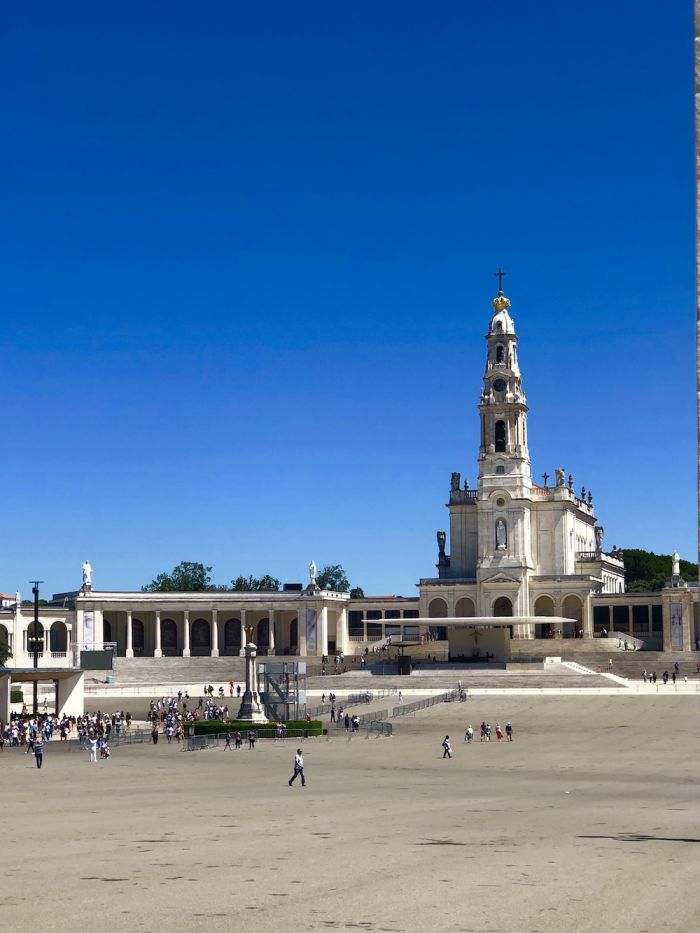
Fàtima is the area where it is said, the Virgin Mary, or the Marian Apparition, first appeared to three young shepherd children, on May 13, 1917. According to the children and others, she appeared many times after that. The Sanctuary of Fátima, also known as Sanctuary of Our Lady of Fátima, is a group of Catholic religious buildings built near the Cova da Iria, where the three children witnessed the Marian apparitions.

I had no idea what I would see, but was surprised at the quiet of this large area. The tall building that dominates the area is the Basilica of Fàtima, a traditional Catholic sanctuary.
But then, in remarkable contrast, is the Church of the Most Holy Trinity, now Portugal’s largest church and the fourth largest Catholic church in the world. I have been to many Catholic churches – but this one surprised me, as it is modern, really modern, and looks like no other I have ever seen.
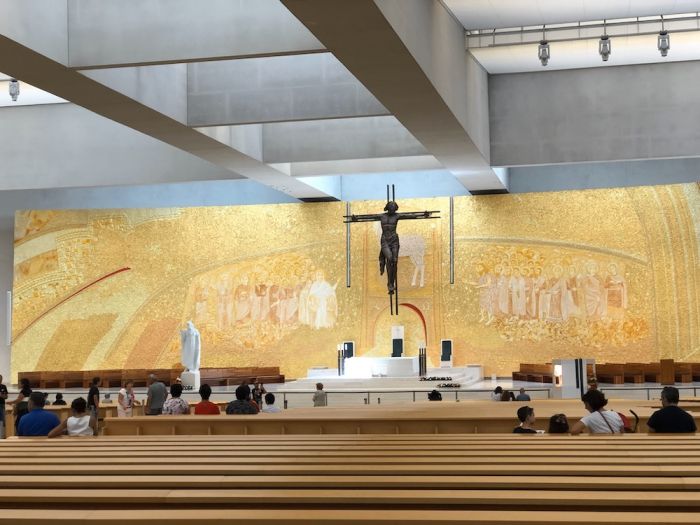
The church interior is huge, with 9000 seats, and an altar that allows multiple priests to lead prayer in large celebrations. It was designed Alexandros Tombazis, a renowned Greek architect. The cornerstone of the church came from a marble fragment of St. Peter's tomb, located under St. Peter's Basilica in Rome. The outside wall of the church is designed with reflective writings depicting the Mysteries of the Rosary, and on this wall, they are written in many languages. It was a beautiful, though mysterious (to me) work of art.
Outside the Church, is a large bronze statue of Pope St. John Paul II. He made three historic pilgrimages to Fatima during his papacy. In addition, he credited Our Lady of Fatima for saving his life following a 1981 assassination attempt that took place on her feast day,May 17th. One of the bullets lodged in his body that day rests in the crown atop the statue of Our Lady of Fatima in the Chapel of the Apparitions.
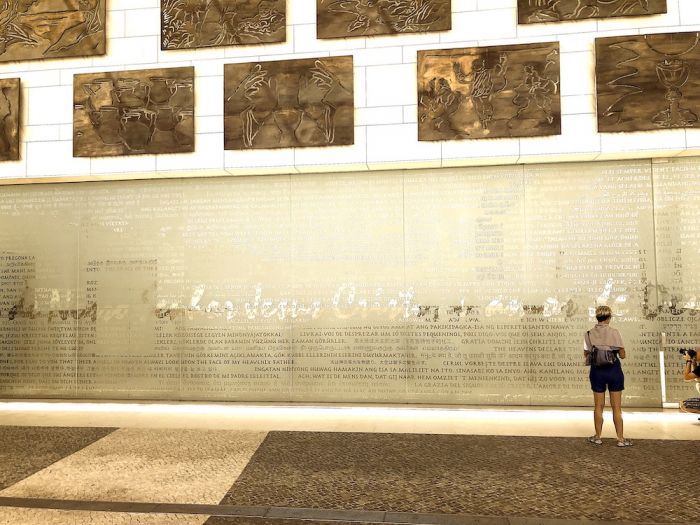
Exterior of Church Of Holy Trinity, Reflecting Wall Depicting Mysteries Of The Rosary

This statue was fascinating to me, mainly because of one thing – all the flowers at the foot of the statue were real. There was no plastic anything. The scent of Persian lilies, carnations, and rose geranium were strong, and in a way, joyous.
With these experiences, our tour became a pilgrimage. We spoke quietly about what we had seen as we traveled back to the Viking cruise ship. My colleagues felt as if they came to know well the places they had only read about as Catholic children. But I, even as a religious outsider, felt I had gained something also: experiencing the sanctuaries, the vivid sun colors, the hands being held through time, walking near the place where the apparitions occurred. I came to understand yet again, how the past illuminates the present, so we – both the believers and the curious -- can more clearly see the depth and consequence of life’s brevity, and feel soul-comfort in this knowledge.

Sign Upon Entering The Fatima Shrine and Church areas..
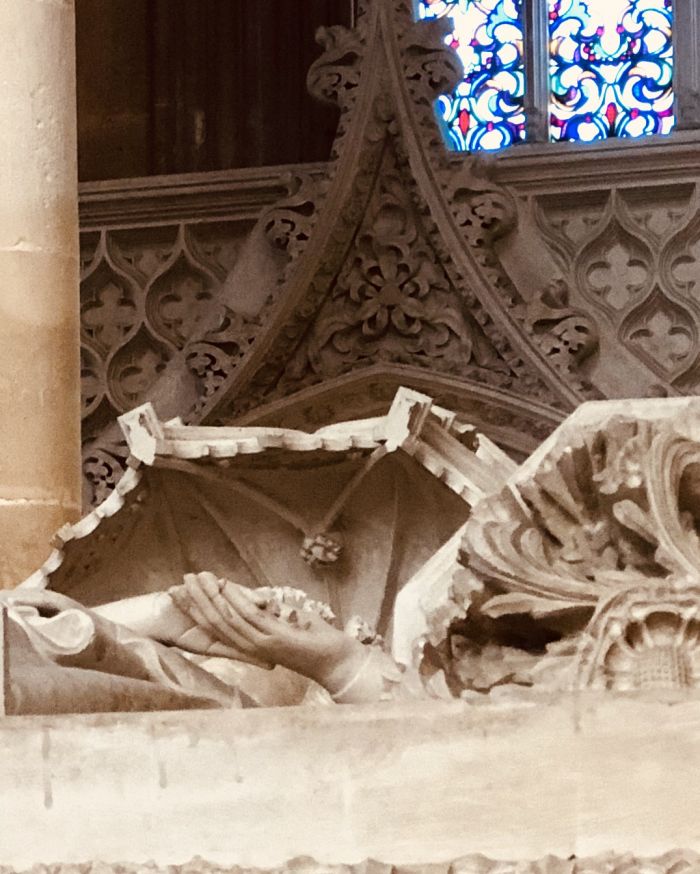
Up Close, Holding Hands
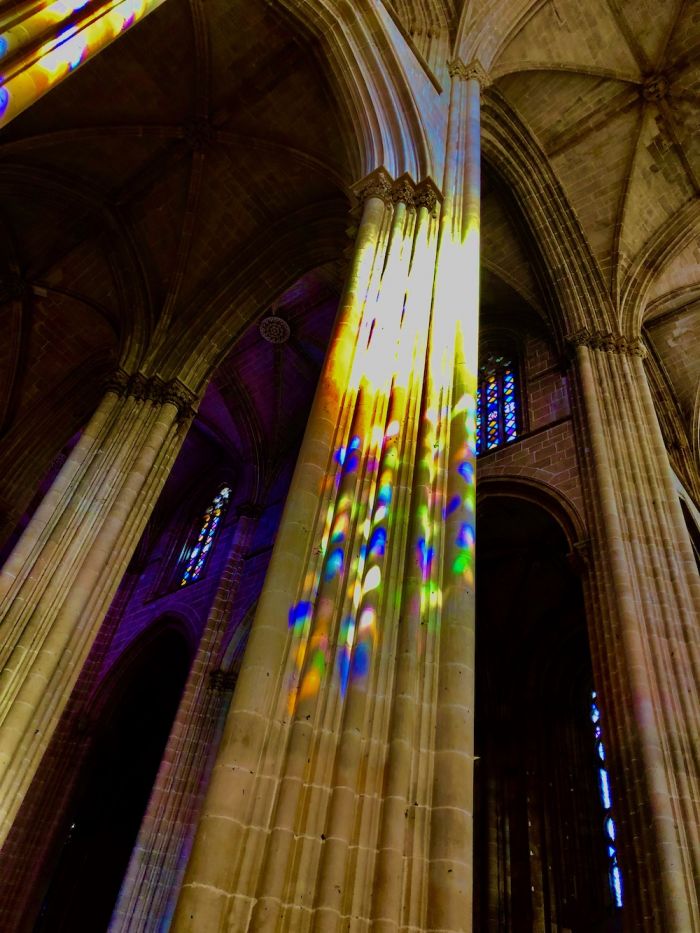
Stained Glass Relfections 2, Batalha









